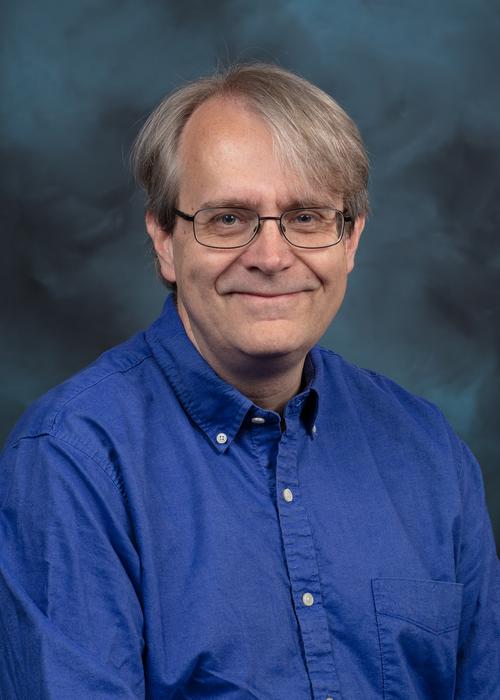Physicists William Raphael “Raph” Hix of the Department of Energy’s Oak Ridge National Laboratory and John Lajoie, who will join ORNL on Nov. 6 from Iowa State University, have been elected Fellows of the American Physical Society.

Credit: ORNL
Physicists William Raphael “Raph” Hix of the Department of Energy’s Oak Ridge National Laboratory and John Lajoie, who will join ORNL on Nov. 6 from Iowa State University, have been elected Fellows of the American Physical Society.
The society works to advance and spread physics knowledge via research journals, scientific meetings, education, outreach, advocacy and international activities. It represents more than 50,000 members, including physicists in government, academia and industry worldwide.
Hix, leader of the Theoretical and Computational Physics group of ORNL’s Physics Division, was cited “for contributions to understanding explosive thermonuclear burning and nucleosynthesis, particularly in contexts like supernovae.”
A computational astrophysicist, Hix has research interests in nuclear astrophysics, stellar evolution and stellar explosions. He studies stellar nucleosynthesis, which is how chemical elements are made during the lives and deaths of stars.
From 2017 to 2022, he led a large collaboration, supported by DOE’s Scientific Discovery through Advanced Computing program, to use supercomputers to accelerate nuclear physics discoveries. The collaboration, known as Towards Exascale Astrophysics of Mergers and Supernovae, or TEAMS, included partners from 12 national labs and universities. The researchers simulated supernovae explosions and neutron star mergers that create chemical elements heavier than oxygen and predicted signatures of these cataclysms, such as gravitational waves.
Now Hix leads TEAMS’s successor, Exascale Nuclear Astrophysics for FRIB, or ENAF. Its collaborators investigate neutron star mergers, in part to help guide experiments about the formation of heavy elements at the Facility for Rare Isotope Beams, or FRIB. FRIB is a DOE Office of Science user facility at Michigan State University that makes isotopes on Earth that before were only made in stellar explosions and neutron star mergers.
Hix earned bachelor’s degrees in physics and astronomy and mathematics from the University of Maryland at College Park and a doctorate in astronomy from Harvard University. After postdoctoral research at the University of Texas at Austin; the University of Tennessee, Knoxville; and ORNL, Hix joined ORNL’s Physics Division in 2004. Since 2010, he has been a joint faculty member in the Department of Physics and Astronomy at UT Knoxville.
Lajoie will be a physicist in the Relativistic Nuclear Physics group of ORNL’s Physics Division when he starts at the lab next month. He was lauded “for the development of advanced trigger systems that enabled the discovery of the quark-gluon plasma and leadership in forging the first detector collaboration for the Electron-Ion Collider.”
Currently the Harmon-Ye Professor of Physics at Iowa State University, Lajoie explores the theory of the strong interaction between quarks that is mediated by gluons. He has studied a phase of matter that existed in the very early universe, called the quark-gluon plasma, using relativistic heavy ion collisions and the substructure of the proton using spin-polarized proton-proton collisions.
He collaborated on the Pioneering High Energy Nuclear Interaction eXperiment, or PHENIX, at Brookhaven National Laboratory. Later he managed construction of hadronic calorimeters for sPHENIX, a radical makeover of PHENIX. He is the first spokesperson for the ePIC Collaboration, which is working to build the first detector for Brookhaven’s future Electron-Ion Collider, or EIC. The ePIC experiment will produce snapshots of the structures of quarks and gluons inside protons and nuclei. The EIC has been named a top priority of the U.S. long-range nuclear physics research plan.
Lajoie earned his bachelor’s degree from Iowa State University and his doctorate from Yale University, both in physics. After working as an associate research scientist at Yale, he started as an assistant professor at Iowa State in 1997, achieving tenure in 2003 and a full professorship in 2008.
Each year, APS Fellow nominees may not exceed one-half percent of the society’s membership, excluding student members. Selection as a Fellow is a prestigious recognition by peers of outstanding contributions to physics. APS welcomes 153 new Fellows to the current cadre.
The new fellows will receive certificates at the APS spring 2024 meeting.
UT-Battelle manages ORNL for the Department of Energy’s Office of Science, the single largest supporter of basic research in the physical sciences in the United States. The Office of Science is working to address some of the most pressing challenges of our time. For more information, please visit energy.gov/science. — Dawn Levy




